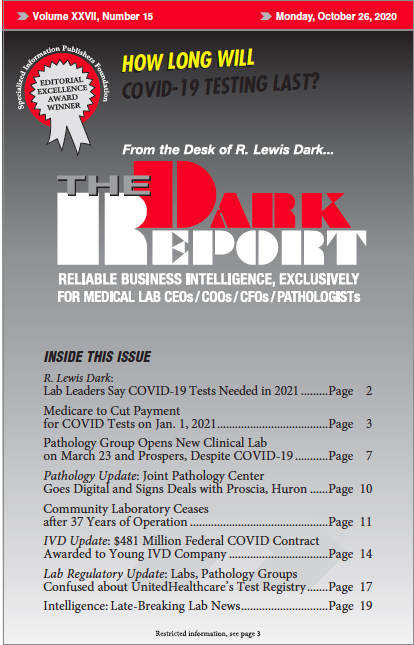CEO SUMMARY: Timing is everything when launching a new clinical laboratory business. The March 23 grand opening of Incyte Pathology’s clinical lab came in the midst of the collapse of daily routine specimen referrals. But once the lab was operational, Incyte had the capability, the expertise, and the facilities to validate and perform COVID-19 testing. Cash flow from SARS-CoV-2 tests …
New Clinical Lab Opens on March 23 and Prospers Read More »
To access this post, you must purchase The Dark Report.


